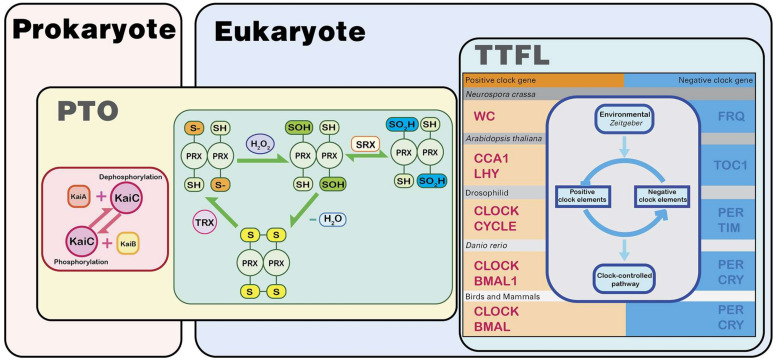Figure 2.
The biological clock in prokaryotes is mainly based on the post-translational oscillation mechanism (PTO). The most typical one is the oscillator with KaiA/B/C as the core, found in cyanobacteria. This oscillator relies on the autokinase and autophosphatase activities of the core protein KaiC for experiments. In eukaryotes, the transcription–translation negative feedback loop (TTFL) mechanism is the main oscillation mechanism of the biological clock. Their molecular composition is different in different organisms, but they have the same principle. There is a biological clock oscillator with the PTO mechanism in eukaryotes. The “redox” oscillator with the PRX protein as the core is widely present in eukaryotes and has a strong correlation with prokaryotic oscillators. The PRX oscillator may be the key to connect the eukaryotic–prokaryotic oscillator and may also be the oldest origin of the biological clock. Zeitgeber: an environmental agent (the occurrence of light or dark) that provides the stimulus setting a biological clock.

